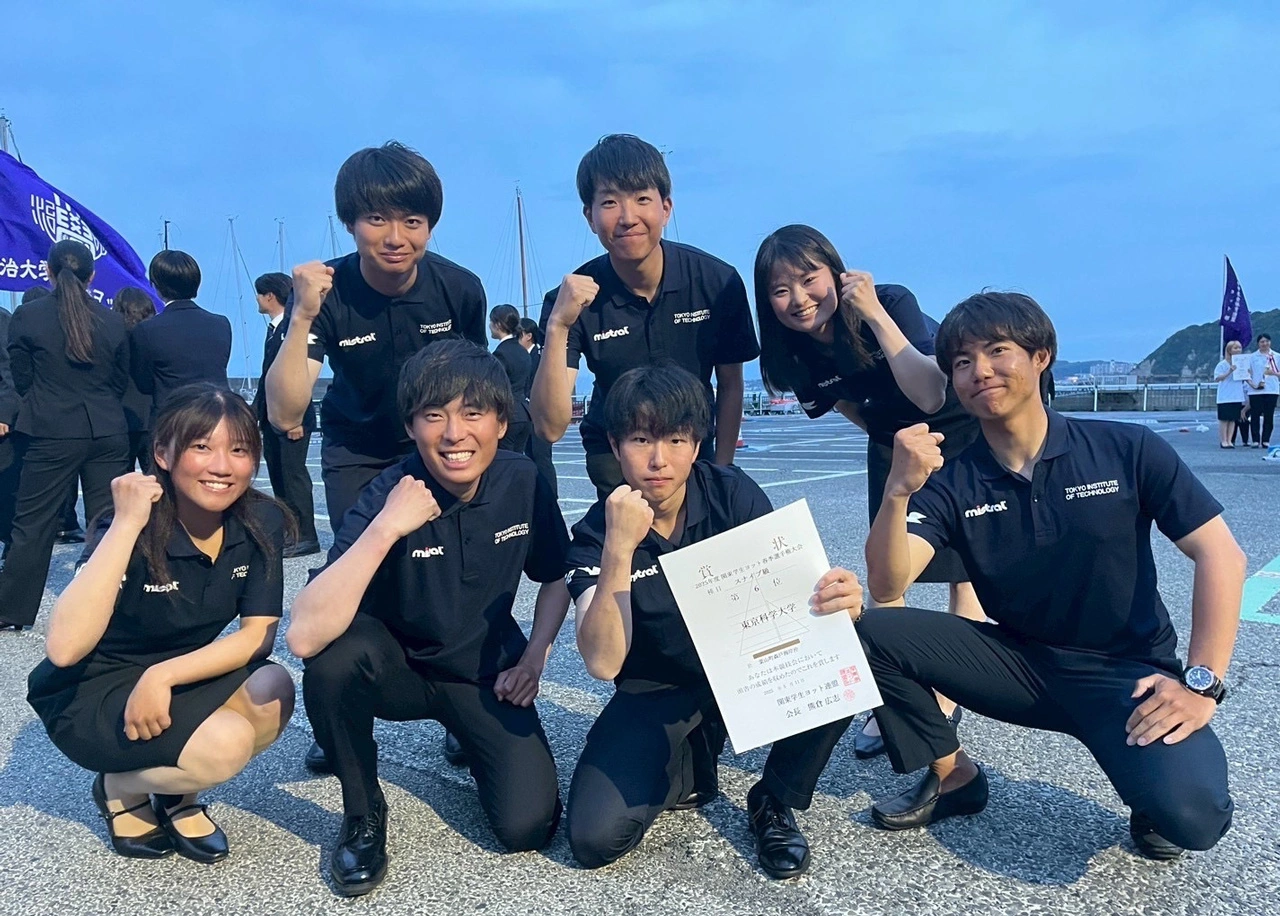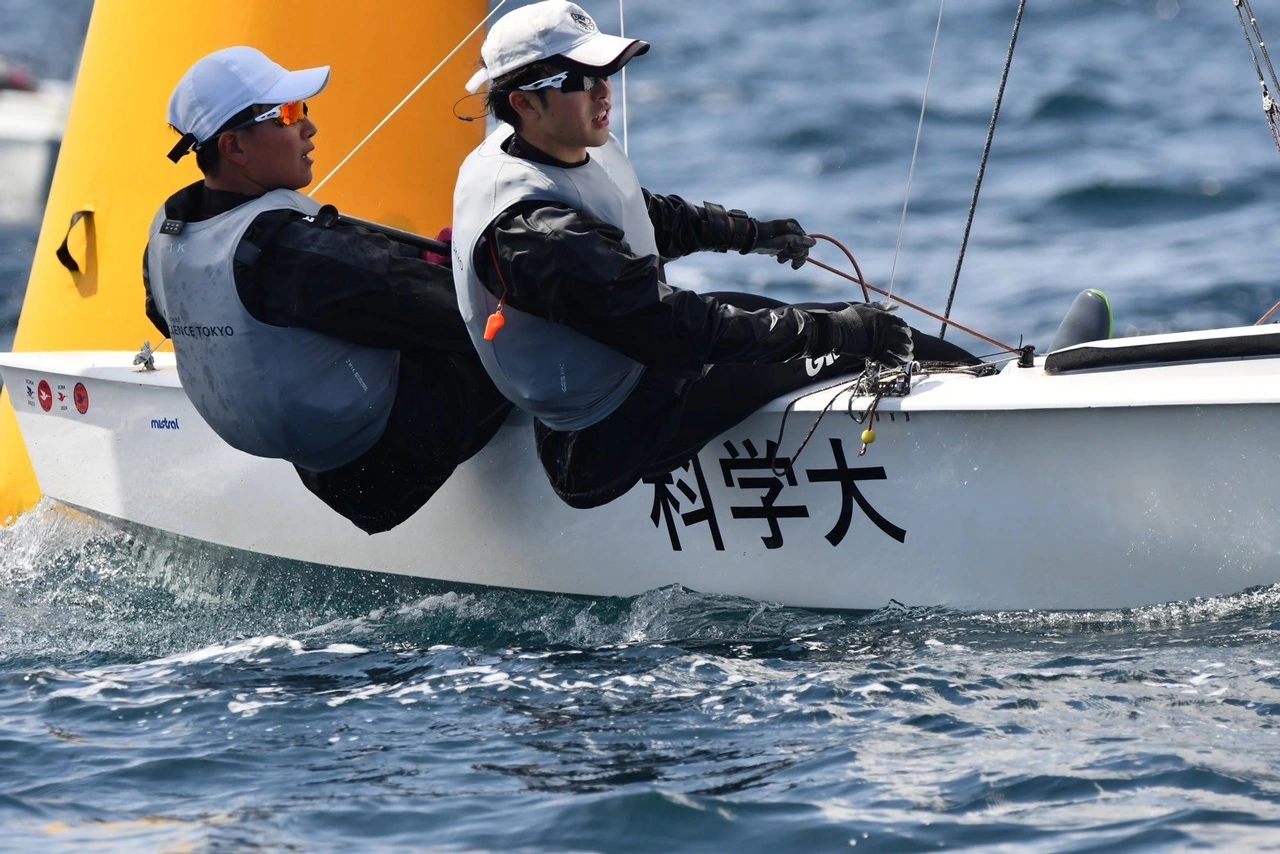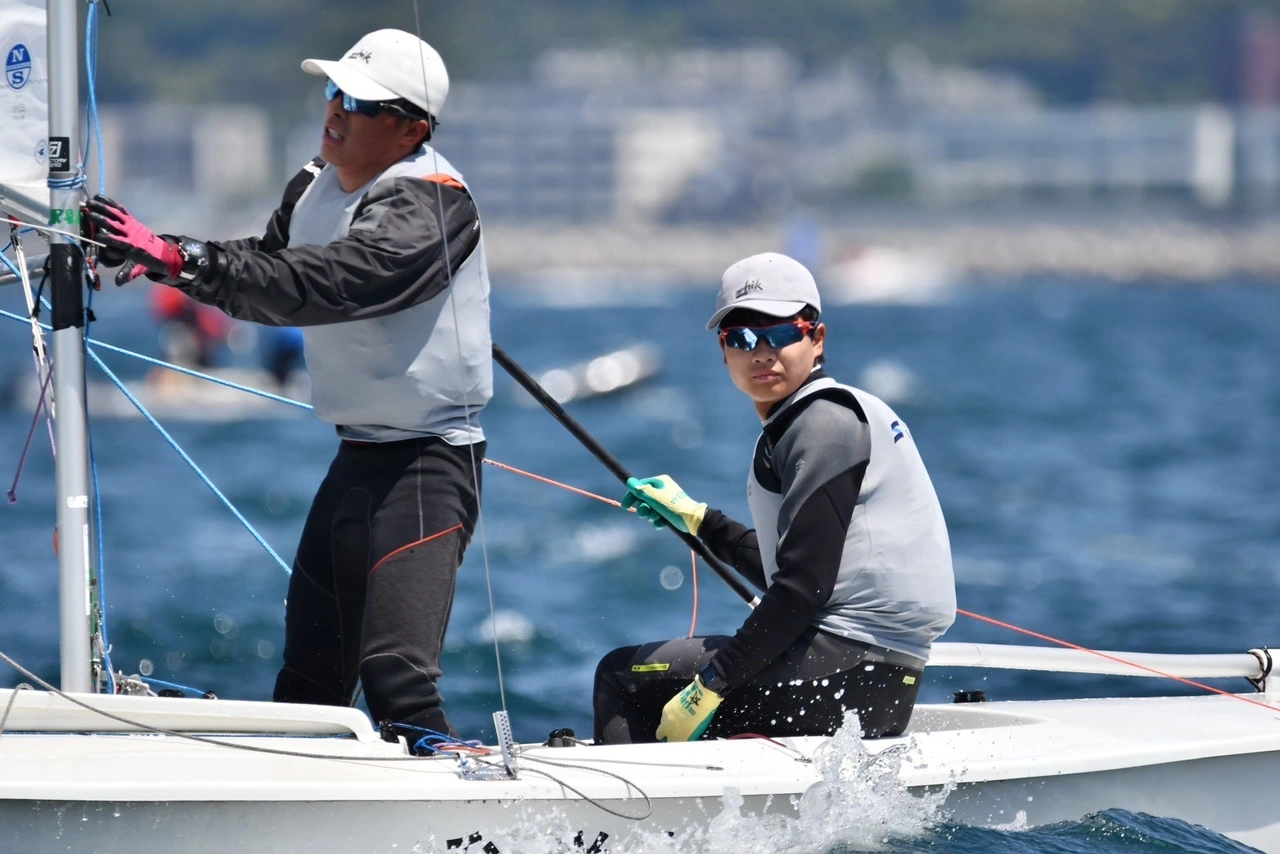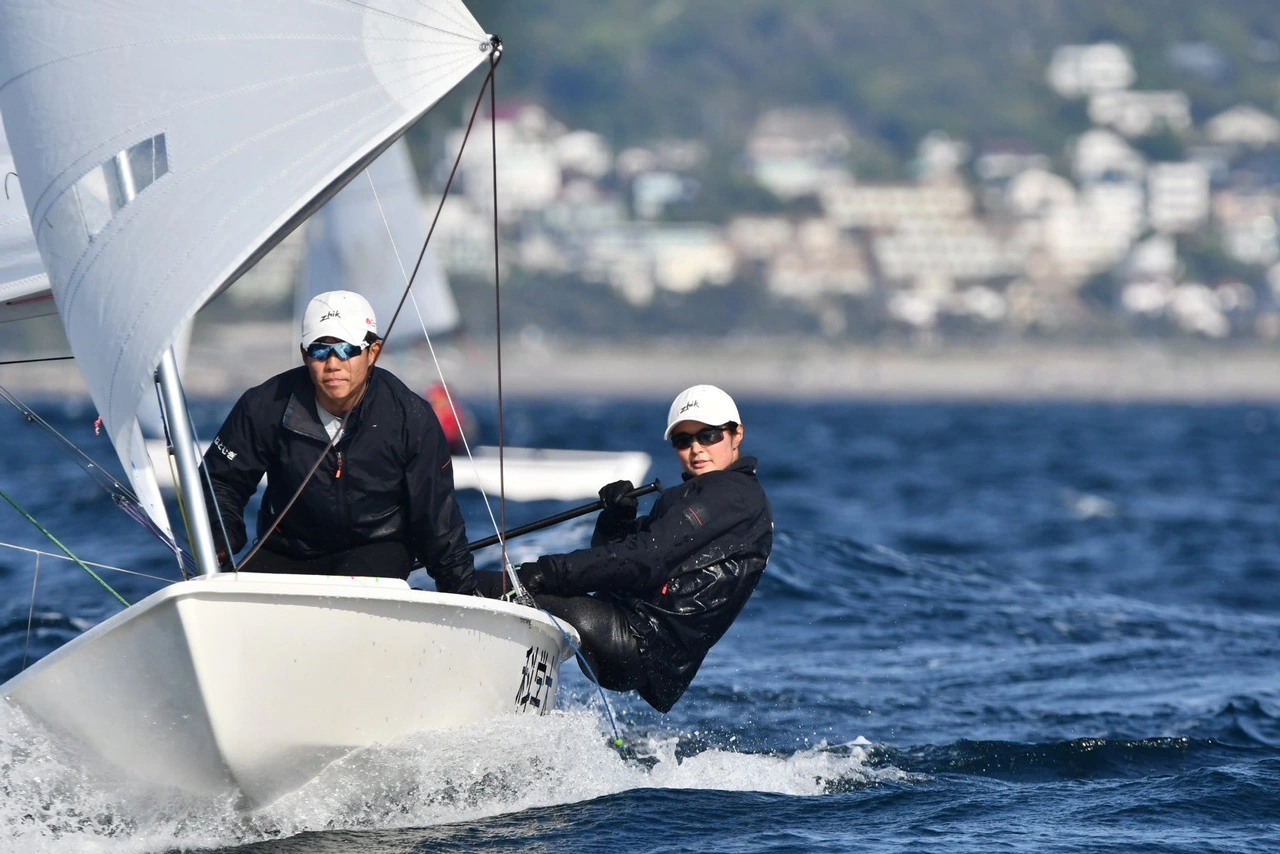Science Tokyo sixth at Spring 2025 Kanto Intercollegiate Student Sailing Competition
The Science Tokyo Sailing Team has finished sixth overall in the Snipe class of the Spring 2025 Kanto Intercollegiate Student Sailing Competition, held at Morito Coast in Hayama, Kanagawa Prefecture on May 3 and 4. This was the first set of races for the united team following the merger between Tokyo Medical and Dental University (TMDU) and Tokyo Institute of Technology (Tokyo Tech), and the formation of Science Tokyo in October 2024.
Snipe class pairs — 6th place overall
Ryo Setaka, 4th year, Systems and Control Engineering
Takuto Sekine, 4th year, Electrical and Electronic Engineering
Ryusei Ohtani, 4th year, Earth and Planetary Sciences
Yamato Haga, 3rd year, Chemistry
Haruna Suzuki, 3rd year, Transdisciplinary Science and Engineering
Yu Endo, 4th year, Life Science and Technology
Yuki Takahashi, 4th year, Computer Science

At the Kanto regional contest, each participating university sends out three pairs who compete for total points and an overall team ranking. This year, Science Tokyo finished sixth out of fifteen competing universities. As a seeded team, the Science Tokyo Sailing Team is now exempt from the qualifying rounds and will progress directly to the finals of the 92nd Kanto Intercollegiate Student Sailing Competition, to be held in October.
Comments from participating sailors
Snipe class team leader Takuto Sekine
I am honored to have achieved a 6th-place finish in the Snipe class of this contest. I would like to thank everyone who guided and supported me daily. As I devoted myself to competing in parallel with my studies and research, I developed my strength and the ability to focus on results in a limited amount of time. By balancing daily classes and experiments with training on the sea, I feel that I have acquired not only time management skills but also a tenacious attitude toward difficulties. This 6th-place result is a passing mark, and we will continue to learn and take on challenges to achieve even higher rankings in the individual competition and the Kanto Intercollegiate Student Sailing Competition in the fall. We look forward to your continued support.

Snipe class skipper Ryusei Ohtani
At this competition, many strong teams from universities in the Kanto region competed in challenging conditions, and we were able to show the fruits of our daily practice. As I balance my studies and club activities, I have realized the importance of situational judgment. In particular, sailing competitions require the ability to read the natural environment, such as the weather and sea conditions, and to make instantaneous decisions. This is deeply related to logical thinking and analytical skills in academics. We will continue to improve ourselves both academically and in our club activities, while striving to achieve better results. We look forward to your continued guidance and support.

Snipe class skipper Yu Endo
I am very happy that we were able to achieve an award-winning result in this competition. In the race, I often felt that I was not good enough as I competed against strong opponents. However, I also feel that we still have room for growth and can aim for better results. Also, the experience of working hard to search for a solution when there is no perfect answer will provide food for future research and academic work. We will not be satisfied with the results of this competition, and will work hard to achieve even better results in the fall.

Competitive sailing
Competitive sailing is a sport that requires a high level of strategy and tactics, such as reading the constantly changing winds and tides, and deciding on the best course for the boat while maintaining speed. In a race, participating boats start at the same time, sail around buoys in the prescribed order a specific number of times, and compete to cross the finish line first. All-Japan student competitions include two classes — the Snipe class and the 470 class.
Snipe-class dinghies use two sails — a mainsail and a jib. Speed can be hard to come by, so sailors must utilize the wind skillfully while maneuvering strategically in relation to the other boats. Sailors lean over the edge to achieve balance while hooking their feet under straps attached to the boat.
In addition to a mainsail and a jib, 470-class dinghies also use a spinnaker sail. This gives the boat more speed than a Snipe-class dinghy, but also makes balancing more difficult. To prevent the boat from capsizing, "trapeze" wires are attached to the boat, allowing sailors to hang outside the vessel with their feet on the edge of the dinghy.
In both the Snipe and 470 classes, a skipper and a crew member operate the boat as a pair. The skipper is in charge of steering the boat, mainly operating the mainsail, while the crew member balances the boat and decides on the strategy and course based on the surrounding conditions.
About Science Tokyo Sailing Team
The Science Tokyo Sailing Team has a long history and is fully supported by the Kuramae Ushio Association, an alumni association boasting 400 members. Their motto is "developing full-fledged sailors, full-fledged members of society.
Related articles
- The Science Tokyo Sailing Team is supported by the Science Tokyo Fund.
Contact
Science Tokyo Sailing Team
Email scitech.sailing@gmail.com